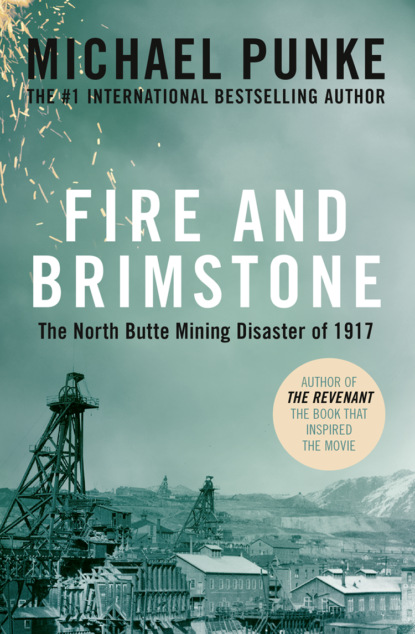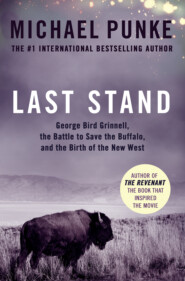По всем вопросам обращайтесь на: info@litportal.ru
(©) 2003-2024.
✖
Fire and Brimstone: The North Butte Mining Disaster of 1917
Настройки чтения
Размер шрифта
Высота строк
Поля
Four (#ulink_79b86b18-2eb3-5674-b61d-6b7a04a14a8d)
“WHAT MEN WILL DO” (#ulink_79b86b18-2eb3-5674-b61d-6b7a04a14a8d)
Ernest Sullau’s Death an Example of What Men Will Do to Help Their Fellows
—HEADLINE, BUTTE MINER, JUNE 10, 1917
Ernest Sullau would have smelled gas within minutes of accidentally starting the fire, probably during those initial, panicked moments in the 2,400 Station. Sullau had encountered gas before. In fact, after his wife, Lena, learned of an earlier incident, she had urged him to be more careful. “Don’t worry,” he told her. “No death is easier and sweeter.”
Sullau’s reassurances aside, death by gas falls far closer to insidious than sweet. This was particularly true for the men of the North Butte Mining Company. As they battled to escape from the depths in the early morning hours of Saturday, June 9, 1917, most of the miners knew that the deadly, invisible gas pursued them. They could smell it and even taste it as they ran.
The gas was carbon monoxide, also known by its scientific symbol of “CO.” According to the Bureau of Mines’ official accident report, “At least 150 of the 163 men killed showed the cherry-red blood and knotted veins of neck and side of head characteristic of carbon monoxide poisoning.”
CO is a brutally efficient killer. If inhaled in sufficient quantities, it keeps the blood from absorbing oxygen, strangling its victims from the inside out.
Carbon monoxide is produced when wood or fossil fuels are burned, and it is most dangerous when its fumes are confined. Thousands of people die each year from CO poisoning inside their homes, usually because furnaces or appliances fail to ventilate properly. It is easy to see how carbon monoxide could wreak havoc within the interior of a burning mine.
Most people familiar with carbon monoxide know that the gas is colorless, odorless, and tasteless. Yet dozens of North Butte survivors reported smelling and tasting gas, meaning that the CO must have mixed with other gases and smoke. One likely source of this distinctive odor was the burning, melting three-ton cable. Its cloth insulation was soaked in oil, and both the lead sheathing and copper-wire center would have spit off fumes as they melted in the intense heat of the fire. Another possible source of the odor was the burning shaft timbers, chemically treated to withstand moisture.
On the night the fire began, 415 men were at work underground in the North Butte’s Granite Mountain and Speculator mines. They were widely dispersed, laboring in pairs or small clusters in hundreds of locations throughout the workings. Fifty-seven men were at work in the upper parts of the mines—between the 400- and 800-foot levels. Most of the rest worked deep in the ground—between 1,700 and 3,000 feet below the surface.
Ernest Sullau grasped quickly that the fire put hundreds of men at risk, though he might not have imagined the scope or speed of the danger. As we know, the fire broke out at 11:45 P.M., driving Sullau and his companions from the 2,400 Station within minutes. By midnight, rising smoke was visible at the Granite Mountain collar.
Smoke and gas also spread rapidly from Granite Mountain across to the Speculator through the multiple crosscuts.
So rapidly did the fumes travel that by 12:10 A.M.—only twenty-five minutes after the start of the fire—smoke began to rise from the collar of the Spec. By 1:00 A.M., gases had spread to adjoining mines owned by the Anaconda Copper Mining Company, including the Badger, the Diamond, and the High Ore.
As the miners initially encountered smoke, most thought it was dust from drilling or smoke from blasting, both commonplace in the mines. Indeed, the North Butte mines exploded more than 1,700 pounds of dynamite every day.
“My partner was at the machine when we noticed what appeared to us to have been an unusual amount of dust,” said a survivor named Jack Watts. His partner started to oil the machine “when a boy from the 2,200-foot level rushed to [us] asking us if we saw any smoke. By this time we were all coughing.”
In many parts of the mine, the smoke and gas were accompanied by a wave of scorching heat from the inferno of the Granite Mountain shaft. Victims hundreds of feet from any flames were found with their faces singed.
So intense was the heat generated in the Granite Mountain shaft that it warped the steel cages in the Speculator shaft—800 feet away. According to one report, twelve men were killed in the Speculator when the heat from Granite Mountain snapped “clean” the cable to their cage. The cable was pulled to the surface, leaving the cage and its victims lodged at the 2,200-level of the shaft.
What we know about the movements of Ernest Sullau after the start of the fire comes from stories told by survivors, many of whom owed him their lives. Having decided against the quick flight from the mine that would have saved his own life, Sullau set about warning his fellow miners of the calamity that he himself had unleashed.
By midnight, all electric lines to Granite Mountain had been burned out. Even if there had been power, Sullau knew that there was no alarm system in place to warn miners of a fire or any other danger. In later years, Butte mines used the air supply itself as an alarm system. In the event of an emergency, a noxious odor was added to the oxygen that was pumped from the surface into the mines—similar to the scent added today to propane or natural gas. When miners smelled this odor, they knew to evacuate.
In 1917, though, the Butte miners could depend only on one another. Their safety hung by a fragile, human chain.
It appears most likely that Sullau initially climbed down from the 2,400 Station. His intention was probably to descend as low as possible, then work his way back up toward the surface, warning as many men as he could find.
One early sighting of Sullau comes from the 2,600. To move between levels, it is important to note, Sullau had to climb. The typical route would have been through a manway, climbing on a rickety wooden ladder. To move from the 2,400 level to the 2,600 was the equivalent of climbing down a twenty-story ladder (assuming ten feet as the equivalent of one story). For his only source of light, Sullau gripped the same carbide lantern that spawned the fire. And of course throughout all of his movements after the outbreak of the fire, Sullau traversed through smoke and increasingly dangerous levels of gas.
On the 2,600 level, approximately 600 feet from the Granite Mountain shaft, a young Eastern European emigrant named Mike Jovitich was eating supper with fifteen other men when he felt a strange sensation in his nose. Soon after came a cry of “fire” and the miners, “as if one man,” ran in the direction of the Granite Mountain shaft. “I am young and had been in the mine only three weeks,” said Jovitich. “So I followed like a sheep would.”
Dozens of miners made the same mistake that night—running toward Granite Mountain and the very maw of the fire, “whereas any other direction would have been safer.”
Their choice of direction, though wrong, was not irrational. Just two months before, in April 1917, fire had broken out in an adjoining, Anaconda-owned mine called the Modoc. The Modoc fire was still burning on June 9. In fact, in two incidents since April, fumes from the Modoc had infiltrated the North Butte property. Both times, miners fled toward the Granite Mountain shaft, where they were lifted to safety. In the early morning hours of June 9, many miners probably believed that the smoke came from the Modoc and ran toward Granite Mountain—the same path that had led them to safety before.
There was another reason for the men to seek safety via Granite Mountain. On the day the fire broke out (and apparently for a few days before), the Speculator shaft had been under repair.
The Spec suffered recurrent problems with shifting ground, which frequently pushed the shaft timbers inward to such a degree that the cage could not pass. When this happened, the shaft had to be closed temporarily while crews shaved back the timbers to create enough space for the cages.
In the emergency circumstances of the Granite Mountain fire, rescuers would press the Spec hoists into service to assist rescue efforts. But on the day of the fire, the men working in the Speculator were lowered via the Granite Mountain shaft.
Thus, it would have been natural for them to believe that their best exit—perhaps their only exit—lay through Granite Mountain.
Whatever the reasoning that led miners to run toward Granite Mountain, the consequences were usually deadly. According to the Bureau of Mines Accident Report, for example, it appears that “at least a dozen” men died on the 1,800 level when they ran toward Granite Mountain. Some of them probably ran directly past a connection to the adjoining Badger mine that would have led them to safety.
Most would have had no way of knowing.
Like the young Eastern European Mike Jovitich, eating his supper on the 2,600, many Butte miners were new to the job. The estimate of monthly turnover in the mines was a remarkable 20 to 45 percent.
In 1917, open positions were usually filled from the wave of Eastern Europeans who washed into Butte’s train station each week, many coming directly from the Old Country after quick transit through Ellis Island. Most were illiterate and spoke little or no English.
Even if the men had been able to read, there were few signs in the mines to label directions. One of the recommendations of the accident report, seemingly basic, was that signboards “be erected to show direction to exits to other mines, to the manways which are in condition for travel, and to the main shafts.”
The requirement for signage marking escape routes had actually been a part of state law since at least 1897, a fact the accident report fails to note.
It was only after the fire, according to one survivor, that “they placed signs around to tell men which way to go.”
As Mike Jovitich and his fifteen companions dashed toward the Granite Mountain shaft, they ran into Ernest Sullau, an encounter that saved their lives. Sullau stopped them and turned them around, telling them about the source of the fire and directing them toward the Speculator shaft. Jovitich and the others ran for the Spec, while Sullau continued his search for more miners to warn.
Even with the benefit of running in the right direction, the Jovitich crew was swimming in gas by the time they made it to the 2,600 Station of the Speculator shaft. They climbed 200 feet up ladders to the 2,400 level “and were again halted by fire and gas.” At some point they joined other men, all seeking to use the workings of the Speculator to make their escape. The group climbed another 200 feet. By the time they reached the 2,200 level there were twenty-six men, now led by a man named Jack Bronson. Bronson, a shift boss, was a friend of Ernest Sullau’s.
At the 2,200 level, forty stories above their starting point at the 2,600, Bronson told the exhausted men what they least wanted to hear—that they must keep climbing. Two men began to weep and said that they could not continue, but they rallied when the others urged them on. As a shift boss, Bronson would have known that there was a connection to the Badger mine at the 2,000 level of the Spec—a possible way out.
Soon, though, men began to fail. Some likely collapsed from the effects of the gas; some stumbled in the crosscut or tripped on rail tracks. At this point, some of the men were probably without their lights. Falling down could easily result in falling behind, and in the darkness, in their weakened state, falling behind could mean death. Six men were missing by the time the main group made the Badger shaft. They rang for the cage, which came immediately. “I never saw anything look so good as did the cage,” said Jovitich.
Remarkably, though, the young man did not climb aboard. The station tender asked for a volunteer to go back and find the missing men, and it was Jovitich who led him back into the gas-filled workings. “The smoke was bad and after I walked 500 feet my knees went out and I fell.”
Jovitich woke up in a hospital bed. “I wish I had been strong enough to save the others.”
Those men not fortunate enough to encounter Ernest Sullau or another experienced miner had to depend entirely on their own instincts. At the 2,200 level, for example, a young man named W. T. Wynder led a small group that first ran toward the Granite Mountain shaft. Others in the group included Wynder’s partner and “a Finlander” whose name is reported only as “Voko.”
As the group came closer and closer to the Granite Mountain shaft, they encountered a wall of smoke and fumes. In Wynder’s description, “That cloud was black as night.” They watched as men in front of them “dove right into that wave of poisonous fumes and every yard we went it became blacker and more terrible.” Then the draft that pushed the cloud blew out their lanterns, casting the men into total darkness. They dropped to the floor, feeling for the rail tracks to find their way.
Wynder realized that they were moving in the wrong direction. “Boys, she’s coming this way!” he yelled. “Turn back and we’ve got a chance!” Finally one of the men managed to light a match and Wynder was able to spark his carbide lantern. By this time, though, Wynder’s partner was gone. Apparently disoriented in the darkness, he had crawled in the wrong direction and was later found dead.
Others too began to panic. “I quit,” said the Finlander Voko. “I cash in my checks.” One of the other men punched Voko “to liven him up,” and the remnants of Wynder’s group—including the Finlander—fled back toward the Speculator. Most made it to safety.
Ernest Sullau was probably in the gas-filled workings of the mines for more than two hours. Though his precise path is unclear, it is estimated that the forty-eight-year-old covered more than three miles, “much of which was climbing up and down ladders.” He spread his warning throughout the lower levels of the mine and sent “at least fifty men to safety.”
There are conflicting accounts of Sullau’s push for the surface. The earliest account says he was leading a group of men through a connection in the Badger mine.
A later, more detailed account says he was leading men through the High Ore.







